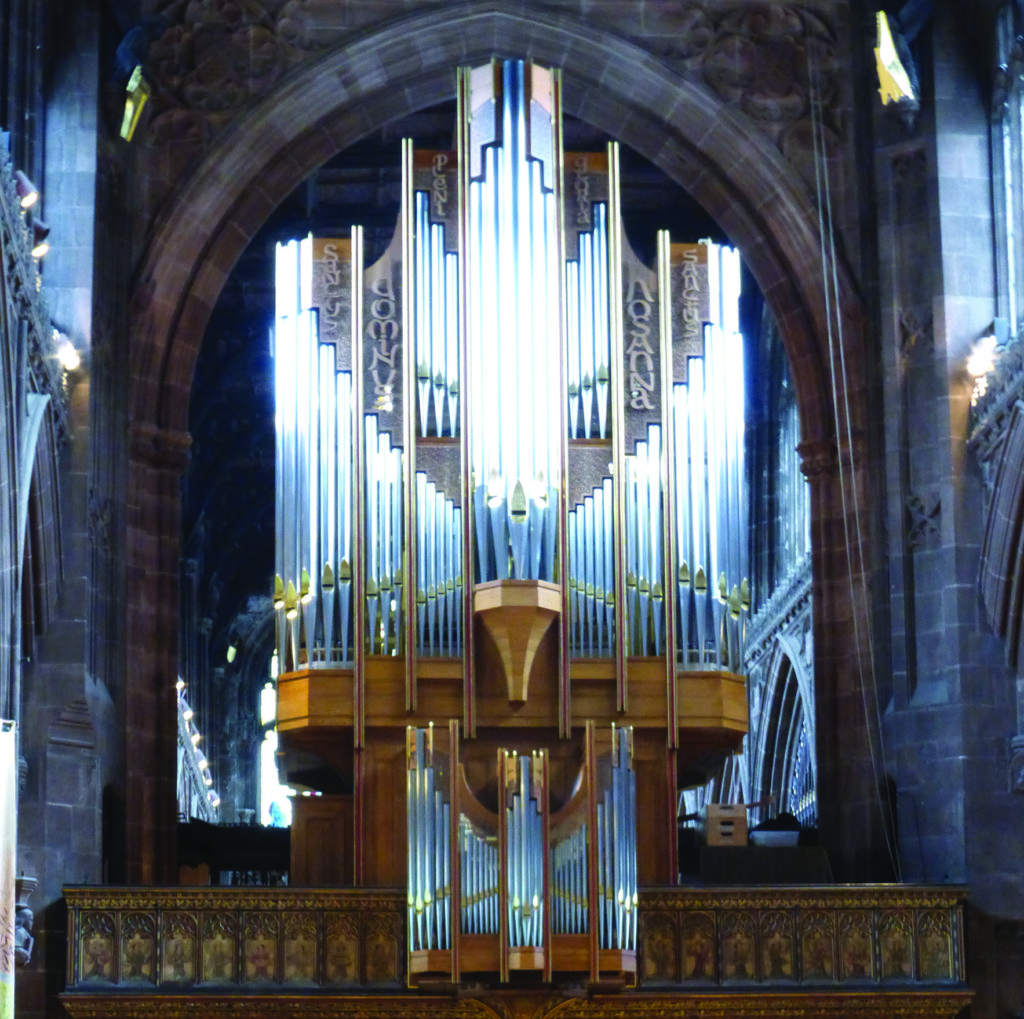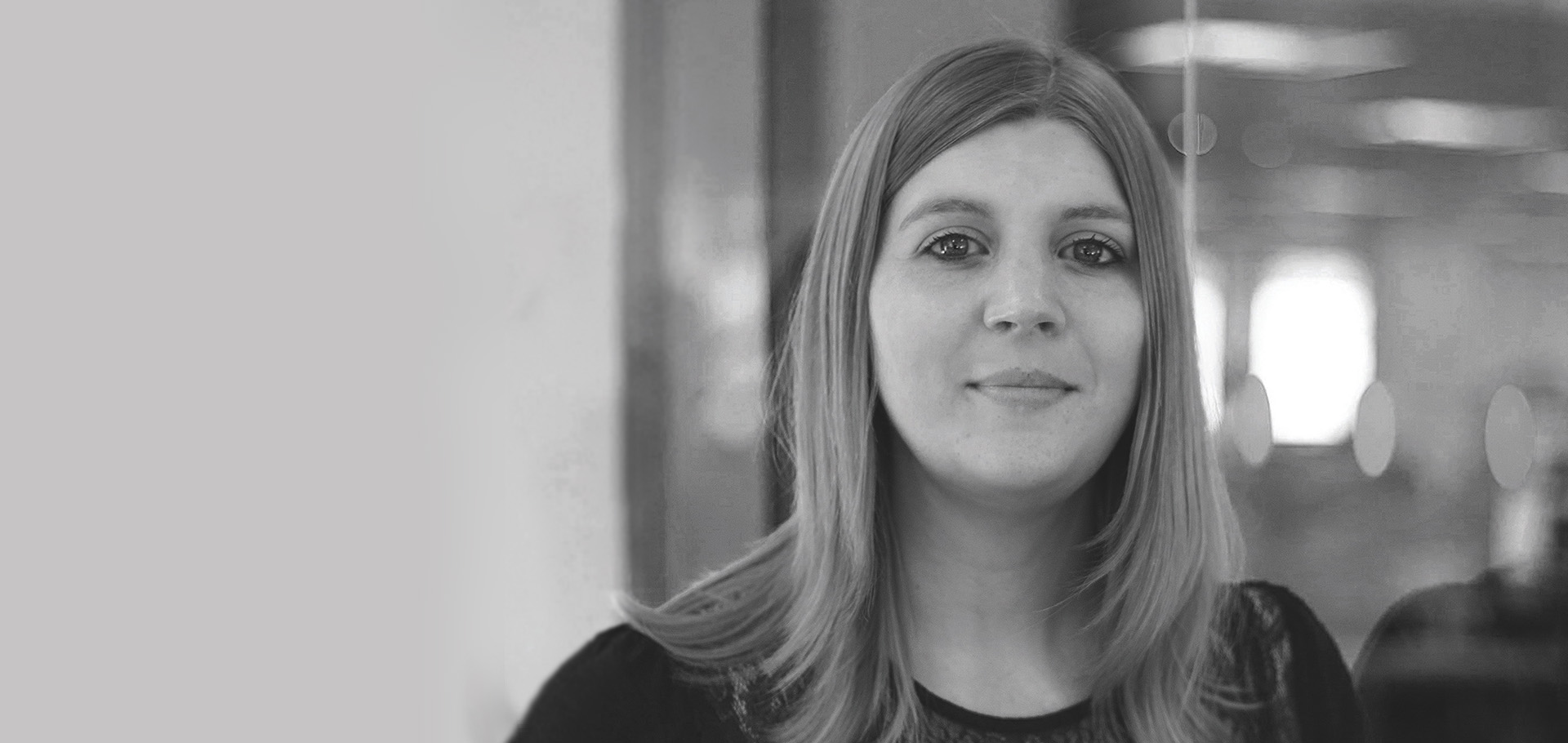Emma Cochrane:
The way I work
The conservation engineer and her firm have been shortlisted for an award for the complex installation of Manchester Cathedral’s new organ
I’m a structural engineer by trade, but working in conservation engineering means using my existing skills to preserve historic structures. There is an incredibly wide variety of buildings we work with, from churches to Victorian tourist attractions to factory buildings from the Industrial Revolution to cathedral organs.
We’re basically helping bring old buildings back to life, stopping them degrading and often returning them to use, all in an architecturally sympathetic way. The fact that you’re working on old structures means your scope is so large: you’re looking at buildings from different eras of design using many different construction techniques. One day you may be finding the best way of turning an old shed into a studio, the next you’re examining the masonry work on a 200-year-old bridge.
Our job was to find a way to suspend the entire organ at around first floor height
I was always interested in old buildings when I was young and then, when I was in secondary school, I started watching things like Grand Designs on television and became really, really inspired by the way they approached restoration and renewal. The physics and mathematics side of school always interested me the most and that led me to the structural engineering course at Strathclyde University, in Glasgow. There I took five years to pass my master’s degree, then, shortly after graduating, I started working for a consultancy. That was six years ago but I’ve been working specifically as a conservation engineer for the last two.
The organ project at Manchester Cathedral began with the planning stages during 2011. The organ they’d been using had been temporary, replacing the one destroyed in a German bombing raid during 1940. Obviously the term “temporary” is an extremely flexible one.
The cathedral had always aspired to a new organ but this only became possible when they received funding from the Stoller Charitable Trust, an organisation founded by Oldham’s Sir Norman Stoller, inventor of the tubular bandage. This led to them commissioning globally renowned organ builders Kenneth Tickell and Co, based in Northampton, to build a brand new instrument. Blackett-Ord, the Cumbrian-based firm where I work, was appointed to look at the structural side of things and devise a way to support this organ.

The cathedral specified the organ was to be situated within the Chancel Arch, which is a central, visually stunning location. The problem was they decided that instead of on the floor they wanted to have the organ above the medieval rood screen that’s situated inside the arch. The organ commissioned was extremely large, around nine metres high, and extremely heavy. It actually weighs around 14 tons and our job was to find a way to suspend the entire thing at around first floor height. Another thing we had to consider was the support structure had to be invisible to the general public once the project was complete and no additional columns or visible ties were permitted.
Kenneth Tickell and Co told us organs were almost always built at floor level on a concrete slab and, although they’d been designing them since 1982, this would be the first time they’d built on a steel platform so far from the ground. Our main problem was designing a steel platform that would remain level all the way through the build, despite the ever changing load that it would bear as the organ began to grow. Steel structures are inclined to bend and deflect, to a degree, but we had to ensure this one constantly remained flat.
When we were building the platform we had to pre-load it with lead weights to ensure it remained uniformly level at all times, then slowly remove the weights as the organ build progressed. Two long, steel beams run across the arch, and then we added connecting members to brace it all back and ensure the structure didn’t twist.
The organ builders told us any deflection in the platform would have a major effect on the 4,800 pipes in the instrument and it just wouldn’t work. We preloaded the frame at four different points by hanging these huge lead weights that were hauled up using block and tackle, and as the organ took shape they were removed 100kg at a time to ensure the total load stayed almost constant. Designing this system is really what took the time for us.
The installation process was completed last year, on schedule and on budget – the total being £2.6 million – which is always satisfying. What makes it all the more so is that the fact that the project was such a complex one.
There isn’t really a typical day in the office for me. With conservation work I can often be handling two or three small projects at once. Then we work on bigger projects as well which can involve me doing steel, concrete or timber designs – all to British standards and Eurocodes – which utilise almost all the things I learnt at university.
As we’re a small practice I do all my own technical drawings, using CAD software. I have a colleague here who still likes to draw by hand, but it’s been a while since that was taught. Having said that, this fanciful idea of a paperless-office is probably never going to happen in structural engineering: there are always sketch pads and pens lying around as it’s so much easier to get a quick drawing together to make your point, rather than reaching for a computer.
Personally, the best jobs are ones where you see a project through to completion and actually get to see it develop on-site. I get that a lot here, which is the benefit of working for a small company such as ours. We get involved with the contractor, actually get to see things coming out of the ground, whereas with bigger companies there’s a tendency to get stuck in the office.
It’s really quite exciting to have the Manchester Cathedral organ project shortlisted for the Institution of Structural Engineers’ Structural Awards 2017. I do think it must be incredibly difficult for the judges to choose from such a diverse list of projects – alongside us Adele’s stage for her 25 world tour and a sculpture featuring BMW cars commissioned for the Goodwood Festival of Speed are nominated, for example. Plus we’re up against international projects too, many from world renowned engineers and architects.
This was certainly one of the most interesting jobs I’ve worked on, but I’ve also done things like survey for corrosion the wrought iron and timber of the North Pier in Blackpool. Considering the structure’s over 150 years old, the cast iron columns themselves are still in incredible condition. I also helped inspect Dunston Staiths, a huge timber structure which is basically an industrial-scale jetty up in Newcastle. That had suffered a lot of erosion over the years so we had to get all the gear on and walk along these rotten timbers out over the water which was, well, a lot of fun, actually.

Leave a reply
Your email address will not be published.